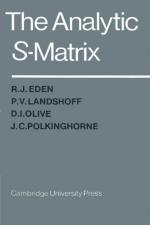|
This section contains 241 words (approx. 1 page at 300 words per page) |
The S-matrix is a quantity related to the probability of events occurring in quantum mechanical scattering processes. In scattering, two or more particles collide, and the resulting mass-energy can be converted to other particles. The particles that exist before the collision, as well as their energies, momenta, spins, etc., are called the initial state, while the particles and their energies, momenta, etc. after the collision are called the final state. The S-matrix contains the probability information for all scattering processes.
Mathematically, a matrix is a two dimensional array of numbers arranged in rows and columns. Individual numbers are called matrix elements. Each row of the S-matrix corresponds to a specific initial state, and each column corresponds to a specific final state. The S-matrix element at row i, column j is the probability that initial state i becomes final state j after the scattering occurs. If an S-matrix element is zero, then the scattering process corresponding to its initial and final states cannot occur.
The advantage of the S-matrix formalism is that if the underlying physical theory obeys any symmetry principles, then the S-matrix also obeys those principles. For example, all quantum field theories must be invariant under Lorentz transformations. Therefore, the S-matrix is also invariant under Lorentz transformations. It is often easier to evaluate S-matrix elements in a specific reference frame, and then use Lorentz transformations to generalize the answer to any reference frame for use in other situations.
|
This section contains 241 words (approx. 1 page at 300 words per page) |


